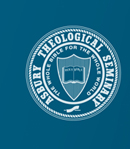Abstract
Since the introduction of social identity theory to the field of biblical studies, the Epistle to the Hebrews has become something of a proving ground for depicting the intergroup relations that are key to understanding relationally-oriented identity dynamics and community identification. However, while social identity theory is a valuable tool for describing how communities self-perceive as unique social entities through the use of in-group and out-group language, social identity theory does not describe the rhetorical process by which such language and communication develops or why this development is so key to creating a distinct community. Symbolic convergence theory, with its elements of fantasy themes, symbolic cues, and rhetorical vision, gives us the unique language we need to describe that process, and the epistle to the Hebrews demonstrates not only the characteristics of a collective identity, but the very birth of that identity as well.
DOI
10.7252/Journal.02.2022F.08
Recommended Citation
Odor, Judith
(2022)
"Creating Community: Rhetorical Vision and Symbolic Convergence in the Book of Hebrews,"
The Asbury Theological Journal:
Vol. 77:
No.
2, p. 319-340.
Available at:
https://place.asburyseminary.edu/asburyjournal/vol77/iss2/9
Included in
Biblical Studies Commons, Christian Denominations and Sects Commons, Missions and World Christianity Commons

